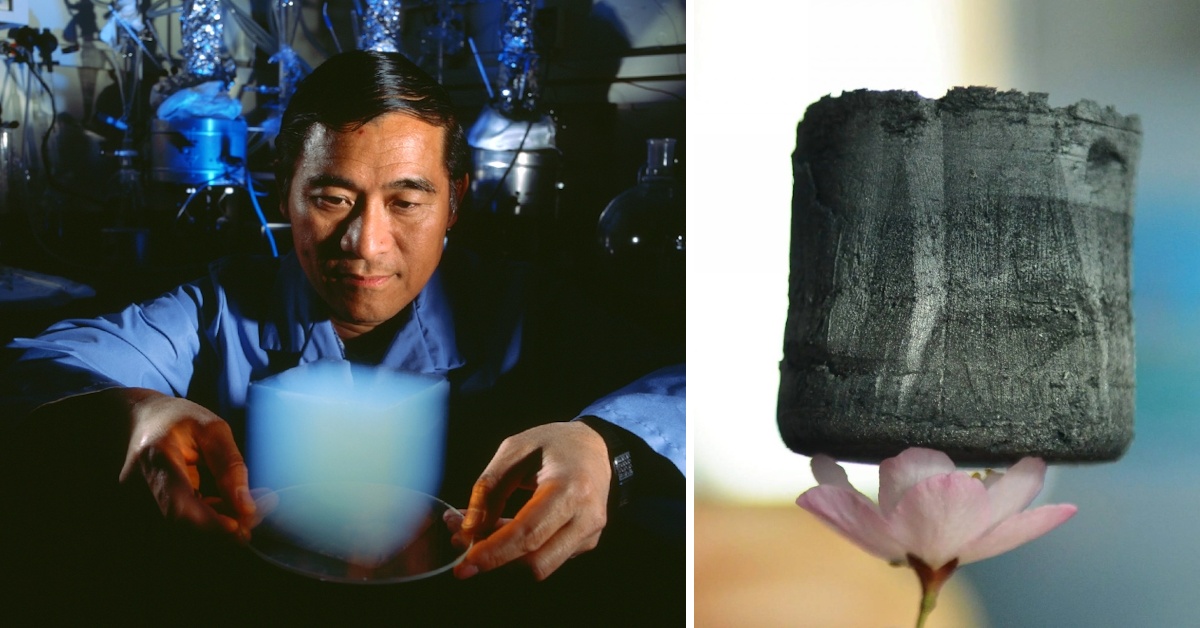The lightest material on this planet.

Aerogels are a class of synthetic porous ultralight material created by replacing a gel’s liquid component with a gas, with the gel structure remaining almost intact. Because of its ethereal appearance, the material is also known as “frozen smoke” or “solid cloud”.
Scientists have come up with more than a dozen recipes of aerogel, from silica-based ones that feel like fragile expanded polystyrene to the touch, to some polymer-based aerogels that feel like rigid foams. These ultralight gels all share a similar process though: mix chemicals together, let them settle into a wet gel, and then suck out all the liquid inside. The result is a an extremely low density substance that is 99% air.
Some aerogels stand out though, in terms of lightness. Graphene Aerogel, the world’s lightest material, only weighs 0.16 milligrams per cubic centimeter. It has recently replaced aerographite, another ultralight aerogel that was screated by German scientists and weighed 0.2 milligrams per cubic centimeter. These aerogels have great oil-absorbing abilities and are thus very useful when cleaning up disastrous oil spills.

To create an aerogel, the liquid component of a gel is removed through supercritical drying or freeze-drying, which allow for the liquid to be slowly dried off without causing the solid matrix in the gel to collapse from capillary action, as would be the case with conventional evaporation.
The first aerogels were produced from silica gels, and the first documented example of an aerogel was created by Samuel Stephens Kistler in 1931. Kistler made a bet with Charles Learned over which one of them could replace the liquid in “jellies” with gas without causing shrinkage. Well, Kistler won, and so did we.
Aerogels make excellent insulators because they almost nullify two of the three methods of heat transfer – conduction (they are almost entirely composed of insulating gases that are very poor heat conductors) and convection (their microstructure prevents net gas movement). Aerogels may even have a thermal conductivity smaller than that of the gas they contain – a phenomenon called the Knudsen effect.
Despite being an ultralight material that looks like an hologram, aerogel is very solid and feels like hard styrofoam

Since they are 99% air, and air is such a terrible heat conductor, aerogels have excellent insulating properties. A protective layer of aerogel will protect a flower from fire.

And crayons are no exception!

This 2.5 kg brick is supported by a piece of aerogel with a mass of 2 g

Sources: 1, 2, 3, 4
